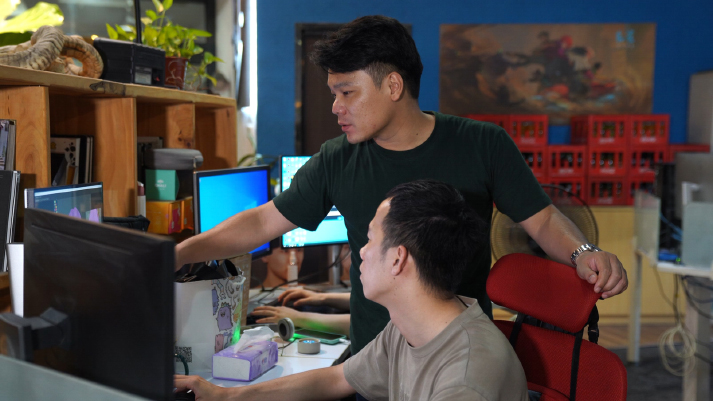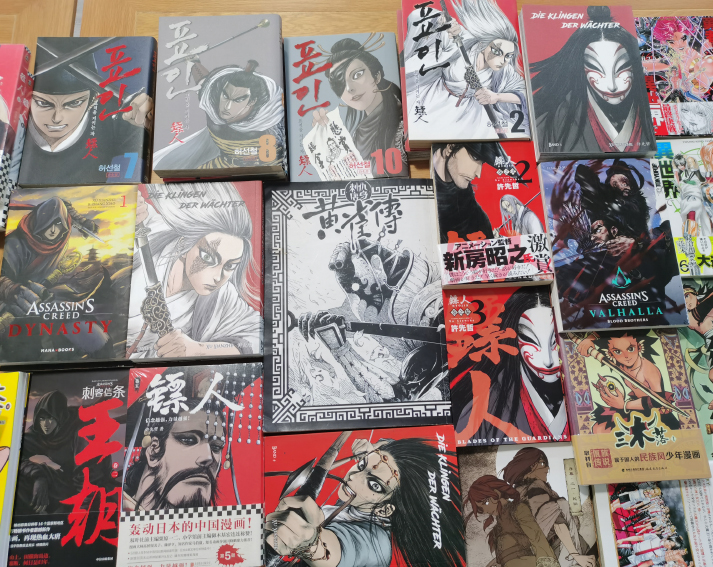How the animation industry has boosted Xiamen City
At the climax of the story, Ne Zha uses his superpowers to hold and melt a huge block of ice to save people from being crushed by it. The dramatic visual effects of this heroic deed were created by Shen Miao Animation Studio, based in Xiamen, Fujian Province. While widely known for its tropical landscape and bustling trade ports, Xiamen has also developed strong cultural industries, including movies, animation and games. The city is now known as a center for animation.

Evolving effects
Walking in Xiamen Software Park II, one can easily find animation companies on almost every corner. Shen Miao Animation Studio, established in 2010, is one of them. The company has 39 employees, mostly young people.
Zhang Bei, cofounder of Shen Miao Animation Studio, is not a Xiamen local. He was born around 1,500 km away in Henan Province in the 1980s. The booming animation industry is what attracted him to the city. According to Zhang, the 1-square-km industrial park is home to over 10 animation companies, which focus on traditional animation and virtual reality effects.
"Xiamen Municipal Government has enacted supportive policies for the development of animation and other cultural industries, which have fueled the growth of many animation and gaming firms," he told Beijing Review.
The city launched the annual Xiamen International Animation Festival in 2008, which has also been a booster for the development of its animation and game industries. According to the Second Annual Animation Industry Conference, held on May 24-25 this year as part of the festival, the annual revenue from animation and derivative industries in Xiamen exceeded 10 billion yuan ($1.4 billion).
Shen Miao has participated in the making of over 80 animations, of which the most well-known is Ne Zha. To create the special effects for the scene depicting Ne Zha melting a huge block of ice, three of the company's animators spent months testing various special effects to create flames. According to the film's director, the flames needed to convey a sense of power. The team also conducted many real-life simulations with real ice and real fire. "It took us nearly three months to create a special effect lasting only around one minute," Zhang said.
The company has also developed original cartoons featuring traditional Chinese customs. "We hope to show traditional Chinese food, festivals and customs to younger generations, sowing the seeds of Chinese culture in them," he said.
Xiamen has attracted many more companies. Headquartered in Beijing, visual effects and animation studio Base Media opened a branch in Xiamen in 2014. It has produced special effects for works such as Transformers: Age of Extinction and Jurassic World: Fallen Kingdom. CGCG Inc., a leading 3D animation studio based in Taiwan, has also worked in Xiamen, participating in the making of works including the animated movie How to Train Your Dragon.
In addition to drawing more related companies to Xiamen, the vibrant animation and other cultural industries have also attracted tourists to the city. Xiamen's Shapowei Area used to be a sleepy fishing village before transforming into a buzzing port in the 1950s. The area went quiet after the port was discarded and then came back to life in the 2010s as an artistic and cultural bloc, attracting people from all over China.
One store in the bloc, with prominent yellow walls, has become so popular that visitors often need to queue in order to pose for photos in front of it. It is one of the three stores in Xiamen that sell merchandise inspired by a comic series about the Chachasi family, whose members include a witty chicken (Chachasi), a slow bear and an egg.
"The Chachasi characters were born as Weixin (China's ubiquitous super app) emojis," Zhu Jin, founder of Xiamen Youlaibo Network Technology Co. Ltd., told Beijing Review. The company's designers have combined them with elements of Chinese culture and Xiamen's local customs.

Growth through exchange
Majoring in computer engineering, Zhu went to Japan for further studies after graduating in China. "Japan has a highly developed animation industry and Japanese anime works are everywhere in the global market. I think Chinese companies can also produce good works that can influence the world with the rich traditional Chinese culture," Zhu said.
After returning to China, he entered the animation industry and started his own business. With his knowledge of computer engineering, he developed software to support the creation of animations, and invited Japanese animators to come to China for exchange.
The company has also promoted Chinese comics overseas. Chinese comic works such as Blades of the Guardians have won public favor in China and are now going global through the Internet.
Blades of the Guardians by Xu Xianzhe is a martial arts graphic novel based on the history of China's late Sui (581-618) and early Tang (618-907) dynasties. It has been adapted into a series of animated dramas that were released this year. The main character Dao Ma is a wandering sellsword. The comic described how he and his companions embarked on a journey of adventure from frontier areas to the capital.
According to Zhu, the elements of Chinese culture in the work have captured the hearts of animation fans all over the world, including in the Republic of Korea, Japan, the U.S., France, Germany and Arab countries. The comic's Korean, Japanese and German versions have been published in print editions.
"Its universal values and its unique characteristics make it a globally competitive work that has gained popularity among overseas readers," Zhu said.
Chinese styles
In recent years, many animated movies and dramas based on traditional Chinese culture have been embraced by Chinese audiences. Animated short videos Yao-Chinese Folktales, based on Chinese mythological stories about monsters, and the animated film Chang'An, featuring the life of renowned poets in the Tang Dynasty, are the most popular Chinese animation works this year.
"Today, Chinese people are increasingly confident in Chinese culture. Traditional Chinese-style animations have won the hearts of viewers, propelling the inevitable revival of Chinese animation," Zhang said.
The most fundamental reason for this revival is that Chinese animators have created better content and pictures. Not only children and teenagers, many adults have also developed an interest in the animation now, he added.
Related articles
-
 Chinese game 3D Animation 《Target》【1080P HD】(Wang Zhe Rong Yao)
Chinese game 3D Animation 《Target》【1080P HD】(Wang Zhe Rong Yao)More
-
 China tightens measures to prevent online gaming addiction among minors
China tightens measures to prevent online gaming addiction among minorsMore
-
 Wo Long: Fallen Dynasty: Exclusive Boss Battle Gameplay with New Weapon Type – IGN First
Wo Long: Fallen Dynasty: Exclusive Boss Battle Gameplay with New Weapon Type – IGN FirstMore
-
 Jiang Ziya: Never have dinner with the naughtiest kid,Nezha! especially on lunar new year's eve
Jiang Ziya: Never have dinner with the naughtiest kid,Nezha! especially on lunar new year's eveMore
-
 Universal Animation
Universal AnimationMore
-
 Gallery: Dressing Up for COMICUP
Gallery: Dressing Up for COMICUPMore
